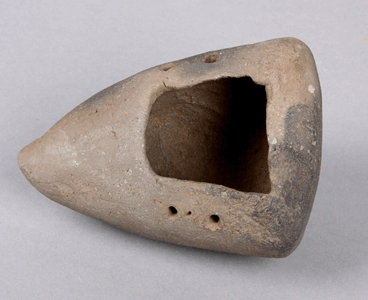
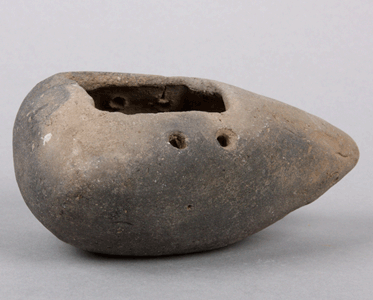
Most ceramic pots from archaeological sites are round and symmetrical, such as bowls and jars. Occasionally, people made other shapes. One of the more common odd shapes is sometimes called a "duck pot" because it looks like a duck. Some of these pots look only vaguely like the body of a duck. Pots like this are often called effigy jars, meaning that they have the form of an animal that they represent. Ducks were significant to people in the dry Southwest because they live near water, an important resource.


36.3.11, triangular ceramic vessel (two views)
12 centimeters (about 5 inches) long
Photographs by B. Bernard.
This pot has an unusual triangular shape that might be intended to look like a water bird. The holes near the opening could have been used to hang it over a fire to cook in or to suspend it from the rafters in a house.
The following example has ridges that show how coils of clay were added to build the shape.

66.105.83, Sapawe duck pot
micaceous washboard corrugated
Photograph by B. Bernard.
Others have more detailed features that are clearly supposed to resemble heads, wings, or tails. This jar has an abstract painted design that resembles wings. Its molded spout looks like part of a bird's head.
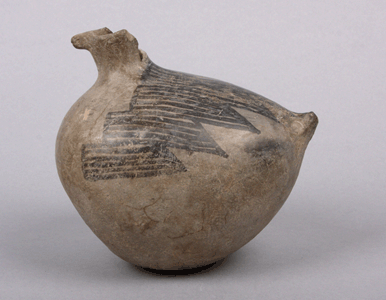
49.3.43, duck pot
excavated form Gallina Ruin, Rattlesnake Point, NM
Photograph by B. Bernard.
This jar has a duck-like body, but four short feet. They could be there to make the pot stable on a flat surface, or possibly this jar is supposed to resemble a different kind of animal.
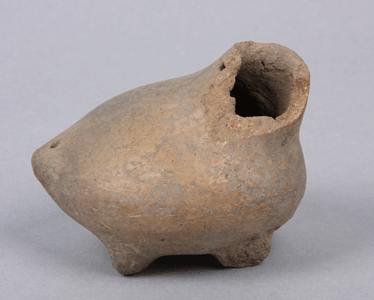
72.43.244, animal effigy vessel
Mimbres
6 centimeters (2 ½ inches) tall
photograph by B. Bernard.
The next jar also has four feet. Despite its flat birdlike tail, it has a head that looks like another kind of animal. It could even represent more than one kind of animal at once, or a being that does not really exist.
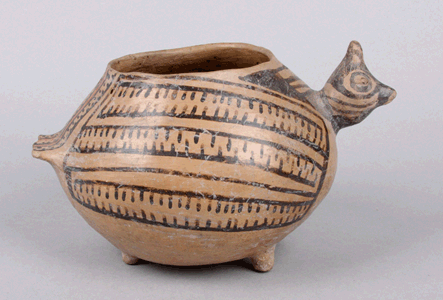
2010-59-209, ceramic animal effigy vessel
20 centimeters ( 9 inches) long
Photograph by B. Bernard.
A modern Zuni Pueblo artist made this duck-shaped jar that is similar to the traditional form but designed in a new style.
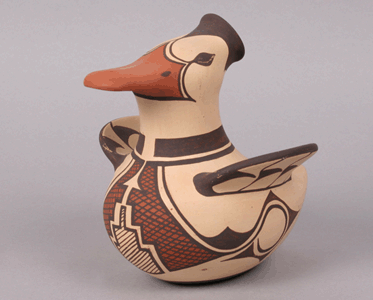
87.48.1, ceramic duck effigy jar
made by Rowena Him, 1985
Photograph by B. Bernard.
Help us build the content of this page! Please contact us about information you'd like to see, information you have, and anything else via the User Feedback link.
To return to the previous page, please click on your browser's "back" button
All content copyright © Maxwell Museum of Anthropology, University of New Mexico. High-resolution versons of these photographs may be ordered from the Maxwell Museum's photo archives. Please make note of the catalogue number. For more information please visit the photo archives web page
Page last revised on April 27, 2011. Please report problems to toh@unm.edu